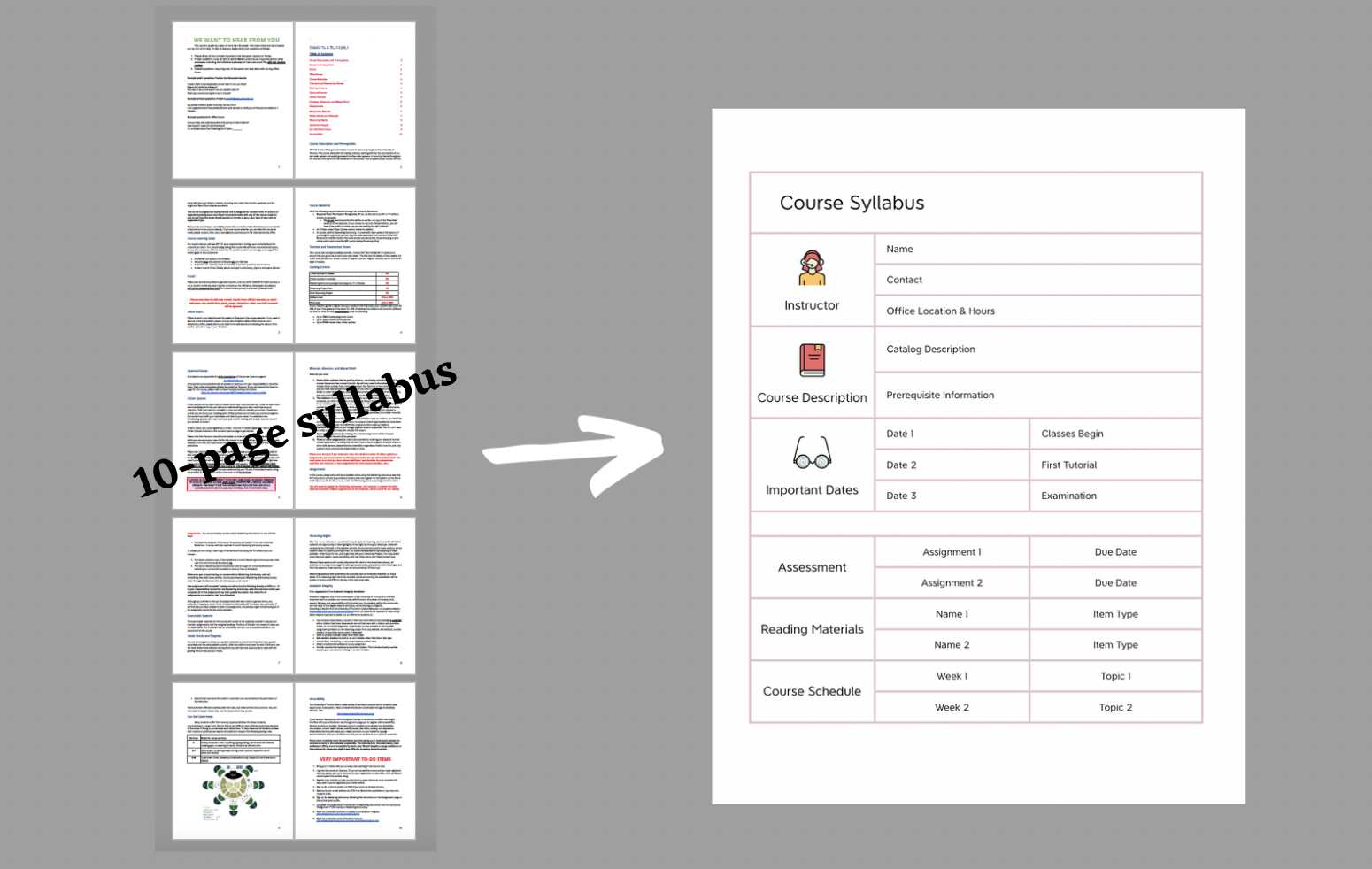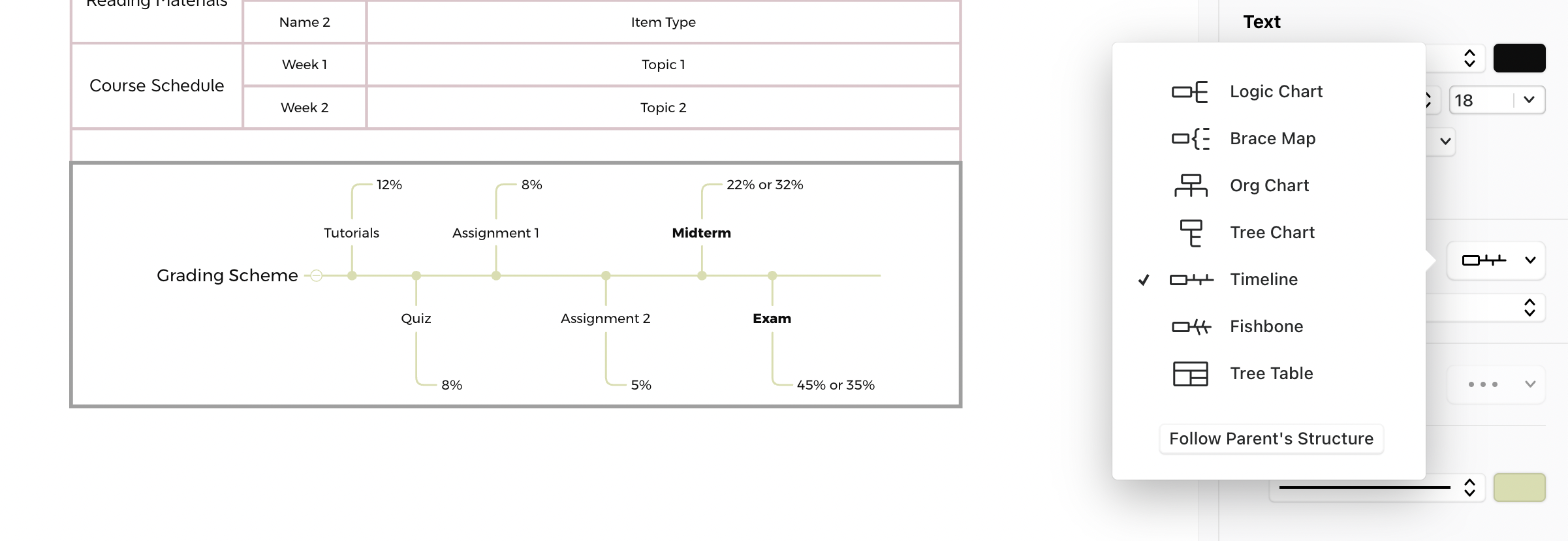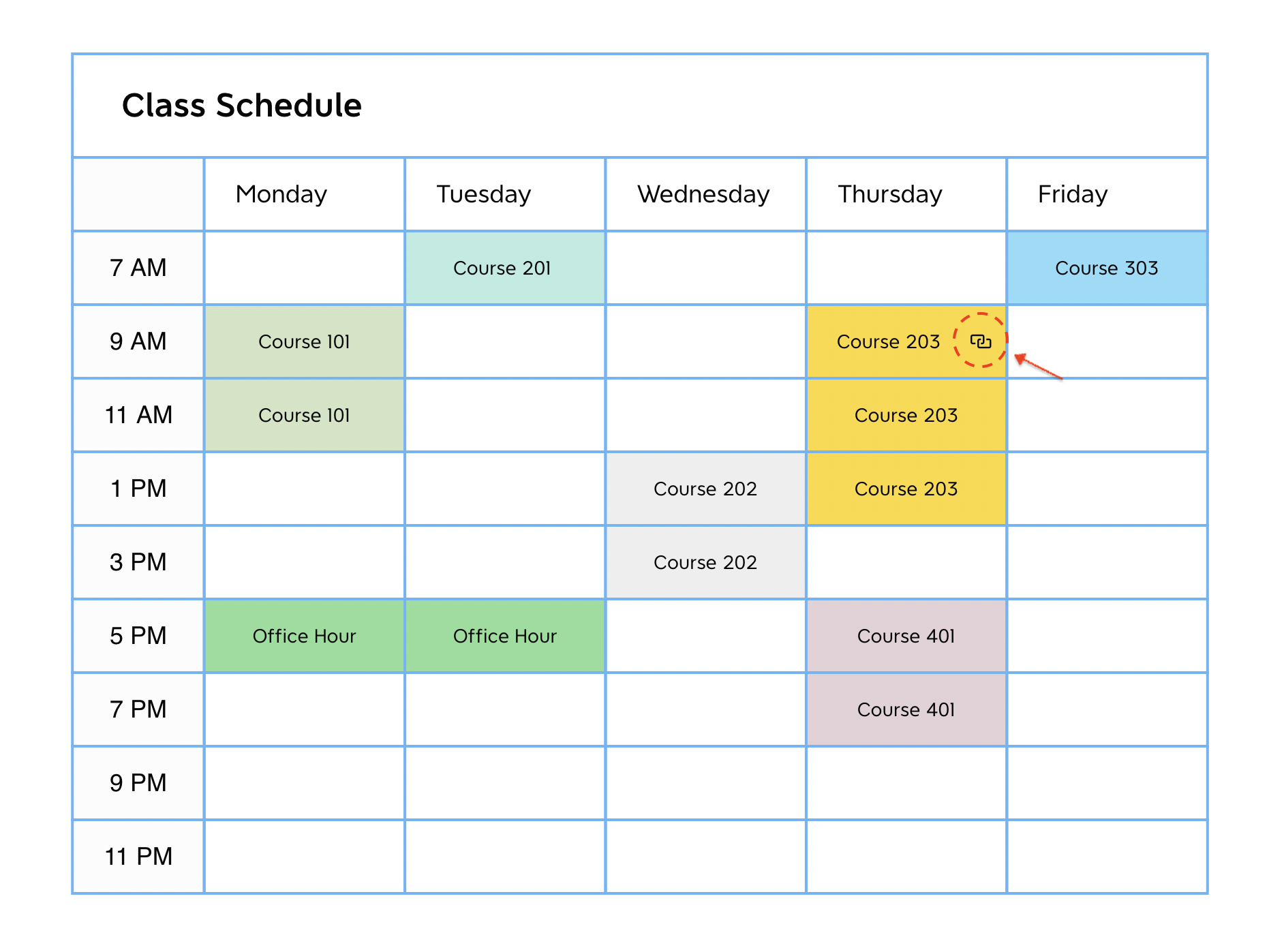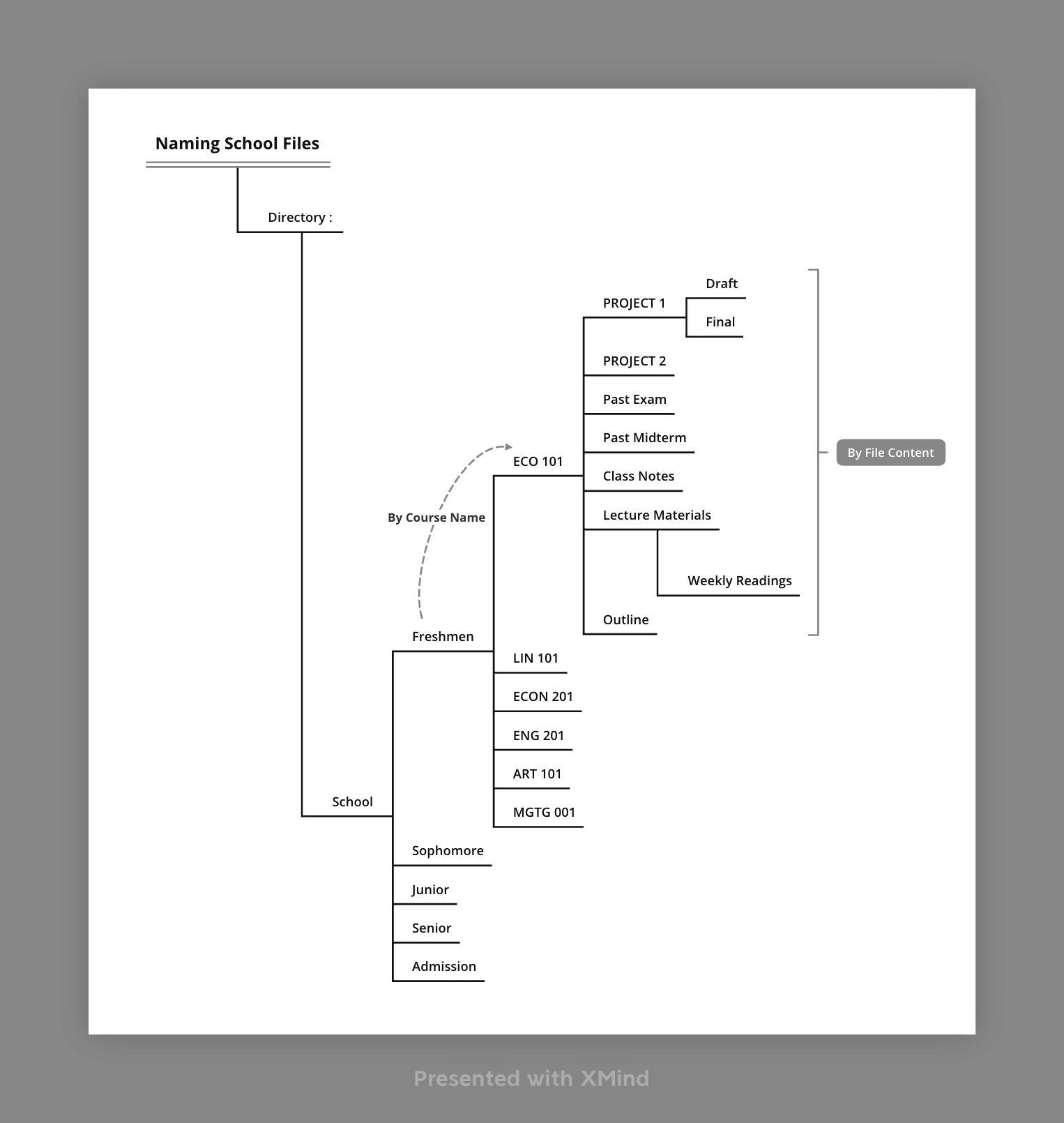How XMind Helps You Stay Organized in College

How XMind Helps You Stay Organized in College

University is a new chapter in our life. It's promised new opportunities, personal growth, and most definitely lots of challenges. Aside from not getting lost on campus, one of my biggest challenges was staying organized.
In this guide, I will share with you how you can use XMind to store all necessary information on your self-built syllabus and keep track of your course schedule using the tree tables. Also, find out more tips and tricks on using various XMind features in this blog post!
To begin with, I've got to tell you that my first year in college was hectic.
You'd either see me in the middle of the street trying to pull up the syllabus/class schedule on my phone to find the correct lecture room or at the library spending most of my "study" time organizing. It was extremely time-consuming.
It gets busy, especially during the first few weeks when students are all trying to decide on courses they'd like to take for the whole school year. People will be dropping and enrolling in classes, downloading online, or picking up physical copies of syllabuses to read and find out if this course is ideal for their plan. For a good year, a chunk of students' time must be dedicated to strategic planning for school.
Staying on top of crucial parts of your syllabus and continually updating your course schedule is the best recommendation for beginning-semester scenarios. Here's how you can do that with XMind.
📚Build Yourself a Syllabus Hub
Not all lecturers favor the use of technology, and not all have mastered its use. It is common for a student to end up with several paper copies of the syllabus, while some other courses have a syllabus that can only be accessed online. It's stressful sometimes but can be avoided by building an all-in-one file with XMind.
- First, using templates from the mind map gallery, build condensed syllabuses regarding the course assessments, descriptions, marking schemes, etc.
It is always appreciated when instructors prepare a comprehensive syllabus that solves almost all student problems in a course. But coming back to a 10-page document to find out just how many percentages of marks one quiz counts for is quite exhausting.

Once I get a syllabus, the first thing I do is mark what I found essential and move these valuable chunks of information onto a tree table or mind map for future references.
Now you have a clean and straightforward list of items on your syllabus that you can export into many different formats like PNG, PDF, or an XMind Share link. Notice that by changing the width of the branches/cells, you can adjust your mind map to optimize its visuality on mobile device~
- Second, make use of XMind's tools to tailor your syllabus further. You may jam-pack your syllabus as much as you like to improve your experience!
Use stickers and markers to emphasize chunks of information. Use the insert feature for your cells when the reading materials are posted online or when local PDF files (lecture slides, reading materials, etc.) are provided by the instructor.

Moreover, keep your mind map versatile by employing different structures and using different shapes in your tree table! Know that XMind supports the use of hybrid structures in a mind map. Insert a logic chart, org chart, a brace map, or even a timeline like the one demonstrated below to keep your mind map neat and tidy!

📖Course Schedule? 🪄More Like a Magic Portal!
Other than using the tree table structure in XMind to recreate a personal learning resource hub, consider using the tree table to arrange your course schedule! By using the templates provided, you can build your own timetable in no time.
Easily adjust the courses by moving the cells around and changing the cells' color to emphasize and tell apart different courses.

Once you have a course schedule made, you can build your two-way portal by merging your syllabuses together with the course schedule.
In this case, you may utilize the insert option to attach the syllabus to the cell that marks the course on your schedule, creating a magical portal that allows you to access the syllabus at any time.
More on naming your files…Because keeping school files organized is invaluable.
Always, always, always keep your school files named correctly and appropriately. Trust me; you are doing your future self a huge favor by spending the extra 10 seconds just to change the file name from "download_file" to "ECO101_PROJECT_DRAFT"!
Also, remember to keep your folders sorted and named according to course codes. Here's what an effective organization system for school files may look like:

When you have your files named correctly and folders assorted nicely, I am sure that you'd embark on your learning journey with a lot more confidence! However, it is easy to keep an organized tree system, but the challenge comes when you put it into use. Constantly adjust the way of naming the files and directory to fit your personal preference!
Organization is a long-term process that requires a lot of time and effort. As long as you put in the effort, this habit of keeping things organized will become a beneficial skill that will help you achieve great things in the future.
College life is not only classes and knowledge; it is life lessons too! Don't be afraid to go out and meet new people and have new experiences. I've put together this blog post in the hope of providing some insights on staying organized in school. Hope this helps, and remember to keep calm and happy mind mapping! ❤️
Try Xmind Free

